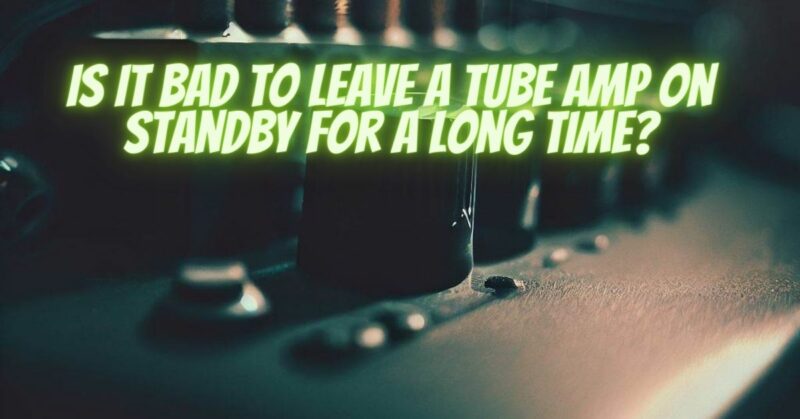Tube amplifiers, often referred to as valve amps, are cherished for their classic warm and harmonically rich sound. Part of maintaining a tube amplifier involves understanding its various modes, including standby mode. However, there is an ongoing debate about whether it’s detrimental to leave a tube amp on standby for extended periods. In this article, we will delve into the potential consequences of leaving a tube amp on standby for a long time and provide insights into best practices for tube amplifier care.
Understanding Standby Mode in Tube Amps
Standby mode in tube amplifiers serves two primary purposes:
- Energy Conservation: When a tube amp is in standby mode, it significantly reduces power consumption compared to full operation. This feature is designed to save energy when the amplifier is not actively in use.
- Quick Startup: Standby mode allows the amplifier to stay partially powered, enabling a faster start-up when you want to use it. This can be convenient for musicians and audio enthusiasts who want to minimize warm-up time.
The Potential Consequences of Long-Term Standby
While leaving a tube amp on standby for short periods is generally considered safe and convenient, concerns arise when it’s left in standby mode for an extended time:
- Component Wear: Some argue that prolonged use of standby mode can lead to wear and tear on specific components, such as capacitors, switches, and even tubes. The constant trickle of electricity may cause stress on these components, potentially affecting their lifespan.
- Heat Generation: Tube amplifiers in standby mode may still generate some heat. If this heat is not properly dissipated, it can impact the performance and longevity of sensitive components, particularly if the amp is in a confined or poorly ventilated space.
- Energy Consumption: While standby mode is more energy-efficient than full operation, it still consumes a small amount of electricity over time. This can contribute to energy bills and environmental concerns if the amp remains in standby for extended periods.
- Preventing Component Stress: The delicate balance between maintaining components and preventing undue stress is a critical consideration for tube amplifier users. The potential for component stress must be weighed against the convenience of quick start-up.
Best Practices for Tube Amplifier Usage
To ensure the longevity and optimal performance of your tube amplifier, consider the following best practices:
- Short-Term Standby: Standby mode is ideal for brief breaks or pauses in playback or practice sessions. It allows you to keep the amplifier ready for immediate use without significantly impacting energy consumption or component wear.
- Energy Efficiency: If you are concerned about energy consumption, consider using a power strip with a master-slave function. This allows you to cut power to all connected devices, including the amplifier, when you turn off the main device (e.g., your audio source or instrument).
- Regular Maintenance: Perform regular maintenance on your tube amplifier, including cleaning, inspecting for loose connections, and addressing any issues promptly. Proper maintenance can help prolong the lifespan of your amplifier.
- Manufacturer’s Recommendations: Follow the manufacturer’s guidelines regarding standby mode and power cycling. Manufacturers design amplifiers to handle standby operation, but it’s essential to use them as intended to minimize potential wear and tear.
Leaving a tube amplifier on standby for extended periods can be a topic of debate, but it is generally considered safe for modern tube amplifiers when used within reason. However, it is essential to strike a balance between the convenience of quick start-up and the preservation of energy and components. Regular maintenance and responsible use of standby mode can help maximize the lifespan and efficiency of your tube amplifier while minimizing its environmental impact.

